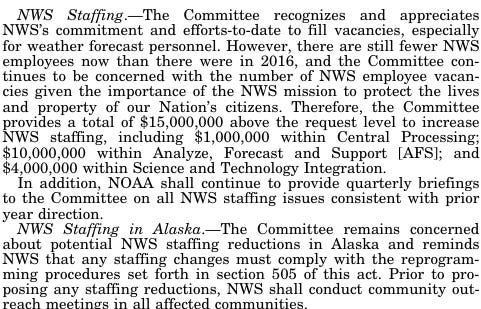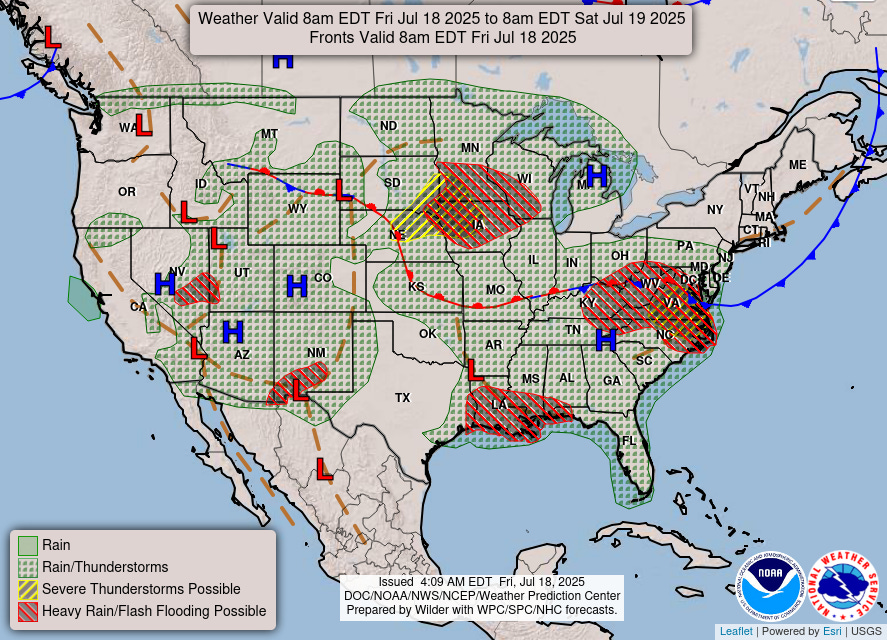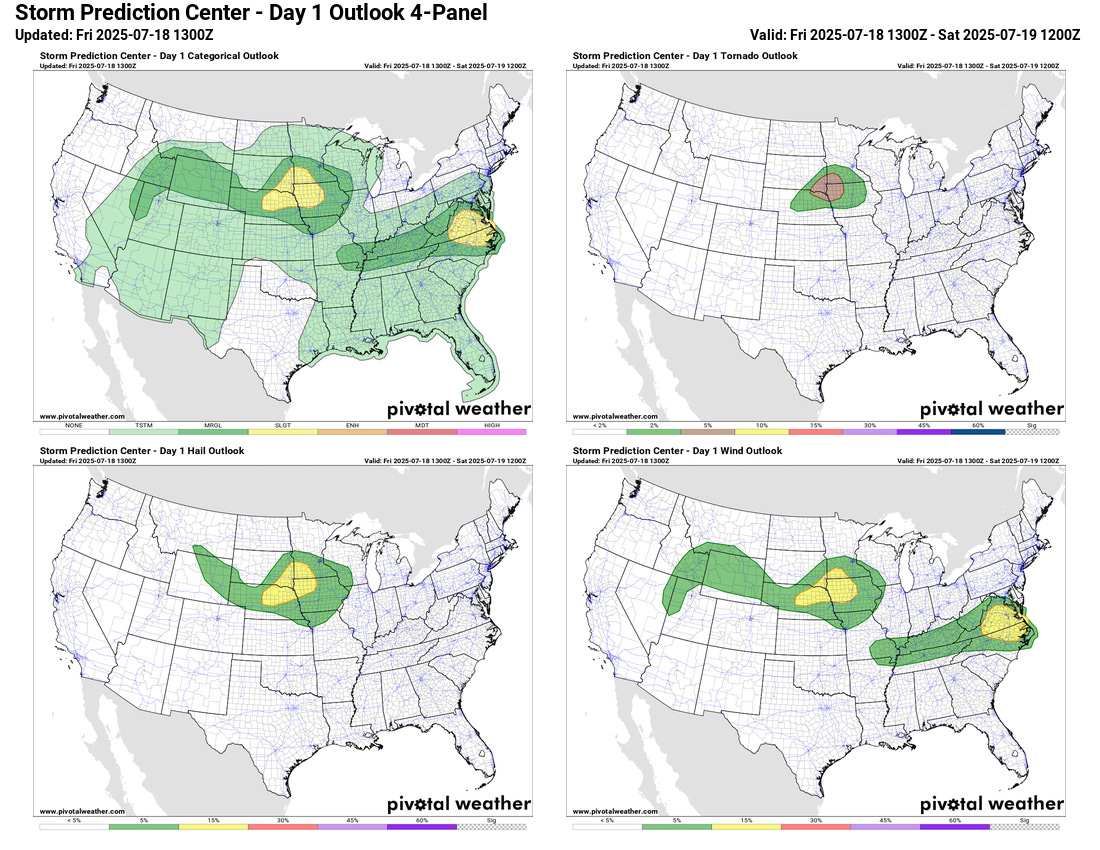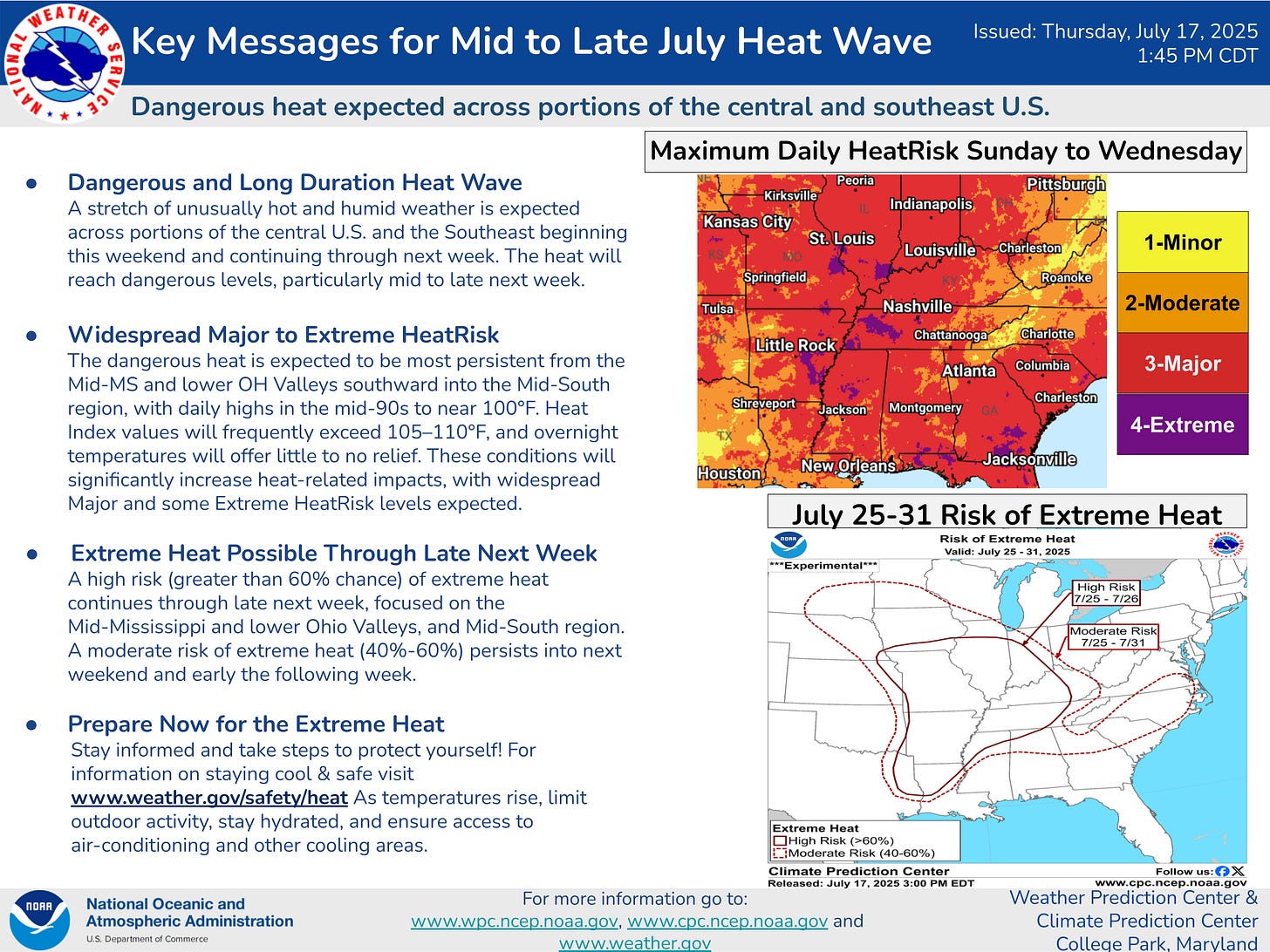Senate budget bill clear rebuke to administration plans to gut science
Meanwhile, OPM head says "whatever"
Starting off this morning with some federal science budget news. Yesterday, the Senate Appropriations Committee resolved the impasse over the FBI Headquarters building that was blocking the FY26 Commerce, Justice and Science bill, and it was approved on a 19-10 vote. With the approval of the bill, the Senate Report on the bill which gives the committee’s detailed intent for the budget was also released.
The Senate has a concept of bipartisan development of appropriations bills, which is why most observers were expecting that their version of the budget bills would be the most “positive” and most likely to show pushback to the many cuts in the President’s budget as developed by the Office of Management and Budget (OMB). With the approval of the CJS bill, the Senate seems to be sending a very clear bipartisan message back to OMB and the administration of nearly full rejection of OMB’s planned massive cuts to science agencies such as NOAA, NASA and NSF (click here for full details on those cuts).
In summary, the Senate bill not only rejects nearly all of the various cuts that the administration desires to science, in some cases they are actually proposing increases, at least over FY24 levels which is when budgets were last done by Congress in the standard manner. For example, from the committee press release:
Climate Research: The bill supports investments to advance critical climate research. In particular, it provides $225 million for climate research at NOAA, $1 million above fiscal year 2024, and $2.37 billion for NASA Earth Science, which is $174 million above fiscal year 2024. Funding for NOAA includes $34 million for the National Ocean and Coastal Security Fund, which improves the resilience of coastal communities around the country.
National Science Foundation (NSF): The NSF is funded at $9.55 billion, a $490 million, or 5.4%, increase above fiscal year 2024. This includes $7.53 billion for NSF’s research and related activities, an increase of $352 million, or 5%, above fiscal year 2024, to implement the CHIPS and Science Act, including investments in artificial intelligence and quantum information science, and the new Directorate for Technology, Innovation, and Partnerships. NSF’s education and training programs to build tomorrow’s innovation workforce are funded at $1.225 billion, an increase of $53 million, or 4.5%, above fiscal year 2024. NSF’s funding level will support approximately 450 additional research and education grants and 15,000 more scientists, technicians, teachers, and students, compared to fiscal year 2024.
NOAA Weather Satellites: The bill includes $1.9 billion—$102 million above fiscal year 2024—for construction of the National Oceanic and Atmospheric Administration’s (NOAA) weather satellites, which are critical to accurate weather prediction that people, businesses, and communities rely on each and every day. The bill maintains the current generation of weather and climate satellites and invests in next-generation satellites. One-third of U.S. GDP is affected by climate and weather—affecting farmers trying to protect livestock and crops, cities relying on energy from wind turbines and solar panels, and air travelers simply trying to get home safely and on time. In 2023, the United States incurred 28 weather and climate disaster events with losses exceeding $1 billion, far more than the previous record of 22 in 2020.
National Aeronautics and Space Administration (NASA): The bill provides $25.4 billion for NASA, which is a $559 million increase above fiscal year 2024. The bill includes significant resources to enable the goal of returning Americans to the Moon, providing $7.65 billion for Exploration, which is $30 million above the President’s budget request. The bill supports progress on the Artemis Campaign Development, including funding for NASA to meet all contractual obligations for both Human Landing Systems in fiscal year 2025.
With regard to other NOAA weather and climate offices and programs, the bill not only proposes maintaining the NOAA research office, the Office of Oceanic and Atmospheric Research (OAR), it actually increases its budget about 3% over FY24 levels. As you may recall, as part of the proposal to eliminate OAR in its budget proposal, the administration did maintain some operationally focused OAR research funding lines such as phased array radar and moved them to the National Weather Service or National Ocean Service. While the Senate bill does fully fund OAR, the bill report does include wording that states that the appropriations committee would be open to the idea of moving some of OAR’s more operationally focused research programs to the operational line offices as the budget request alludes to. However, the report says the budget request does not have sufficient details to support “informed decision-making” for the committee. This is one of several lines in the report that suggests to me that there is definitely bipartisan frustration about the administration’s budget process.
The bill report also maintains the VORTEX-USA tornado research program, and states that funding must remain at least at the $11M level it is currently funded for, and suggests that the funding be increased to $13M. It also continues previous years’ wording about concern about the lack of NOAA progress in improving tornado warnings and forecasts; I am planning a full newsletter talking about this wording and a recently released Department of Commerce Office of Inspector General report on NOAA’s tornado warning program soon. The Senate budget bill also fully maintains funding for NOAA Sea Grant and for the regional climate centers, both of which are proposed for elimination in the president’s budget.
With regard to the National Weather Service, the proposed top line budget number for FY26 is a slight increase over the FY24 enacted budget at $1.25B. The bill report states that the committee is very concerned about staffing shortages at NWS Weather Forecast Offices, and directs the NWS to provide a report within 90 days of the passage of the budget regarding vacancies and a comprehensive plan to achieve full staffing. To give some perspective about NWS staffing, similar wording (without a required report) can be found in Congressional budgets back several years:
This is the wording from the bill report/explanatory statement for the final FY2022 omnibus budget bill. I provide this to show that while NWS staffing has become much more of a crisis situation due to the recent job losses from buyouts and staff reductions, this is truly a chronic situation that goes back many years, and will not be simply rectified by the hiring back of 125 of the several hundred positions lost earlier this year.
In summary, while all of this news is positive, it unfortunately comes with caveats. First, this is just one side of the Congressional budget process, and while it appears the House budget proposal will also be much more favorable to science than the administration’s proposals, this Senate proposal is unlikely to be the final version that ends up passing. Furthermore, as I have been stressing, until a FY2026 budget becomes law - which will likely not happen for several more months - the administration has the primary control over spending and agency organization and priorities.
To further emphasize that point and just how aggressively this administration appears to want to assert its control over the federal budgeting process, OMB Director Russell Vought made very clear in remarks to a Christian Science Monitor reporter breakfast yesterday that he intends to force massive budget cuts regardless of Congressional action. You can read the full summary from the article on HuffPost for more details, but these remarks get the gist of it:
Vought dismissed the idea that he’d be willing to assure senators that he’d stick to the funding levels they decide in their next bipartisan funding bill — and not later scale back their spending through more rescissions packages. “No, I’m not,” he said. “Who ran and won on an agenda of a bipartisan appropriations process? Literally no one.” It’s time for Congress’ appropriations process to “be less by party” and more about cutting spending, said Vought. “I actually think that … if we have a more partisan appropriations process for a time, it will lead to more bipartisanship.”
The OMB director said Trump has a number of tools he can use to impose more spending cuts, like rescissions packages and so-called “pocket rescissions,” a potentially illegal tactic where a president proposes a funding cut so late in the fiscal year that the funding expires before Congress has had 45 days of session to consider it. “So if the only game in town, because of rescissions, pocket rescissions … is the actual budget process working, if I propose to eliminate community development block grants, go to zero, and the appropriators want to go and cut it by half, that’s the meeting in the middle,” he said. “That improves the process. We’ve gone back to the way it used to work and we have restored budgeting.”
In that scenario, the government’s budget is responsibly restored “because you have the executive branch ensuring that it’s not cowing to a legislative branch’s understanding of its own authorities and powers,” said Vought. Vought claimed that while Congress “absolutely does” have constitutional authority over spending, it doesn’t mean Trump can’t roll back what they’ve approved and signed into law. “That power of the purse … it’s a ceiling, it is not a floor,” he said. “It is not the notion you have to spend every last dollar of that.”
I will say that in 35 years of watching the federal budget process closely that I have never seen remarks like this from an administration official about the budget and ways for the administration to openly work outside of Congressional budgeting and oversight. Between the position of the OMB Director and signs of pushback from Congress such as this CJS bill and others - for example, in the confirmation hearing for Neil Jacobs as NOAA Administrator, GOP Senators openly complained about the administration not submitting required spend plans to Congress - it seems pretty clear that there is a looming showdown on budget authority and that science will be one of the key friction points.
I will finish with a quick look at today’s weather. As has been the case for what seems like forever, flash flooding will be a risk in several parts of the country today as the Weather Prediction Center has outlined above in red.
Slight risks (level 2 of 5) of severe weather are also in place in the upper Midwest and in the Mid-Atlantic regions for later today.
Meanwhile, concern continues to grow for a potential major, prolonged heat wave across much of the central and southeastern United States starting this weekend and continuing through at least next week. More to come about this potential as we head into the weekend.







Vought's comments were very revealing. Since when?
NOAA and science lives to fight another day...